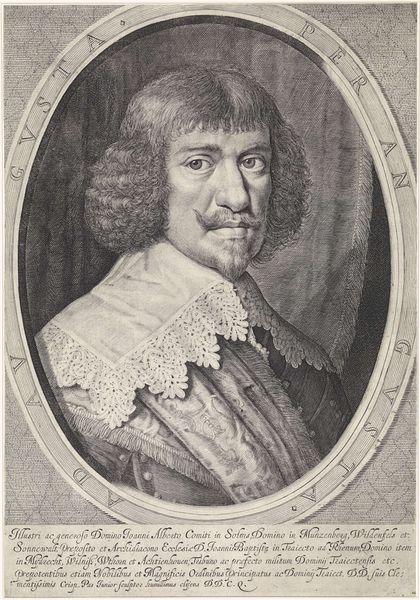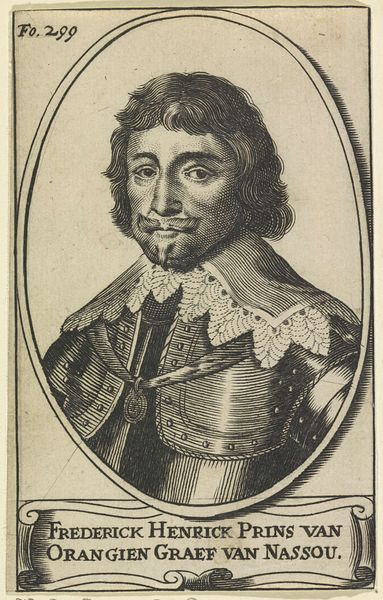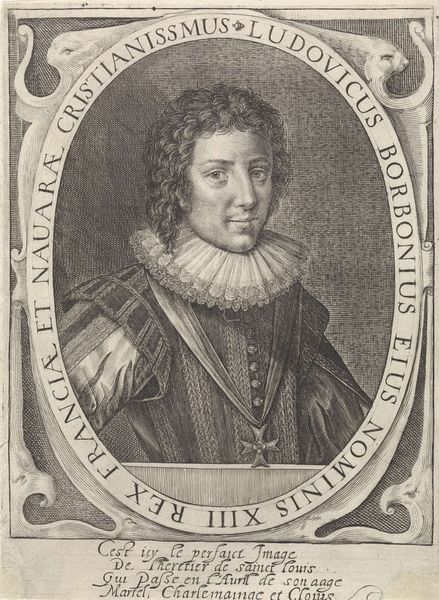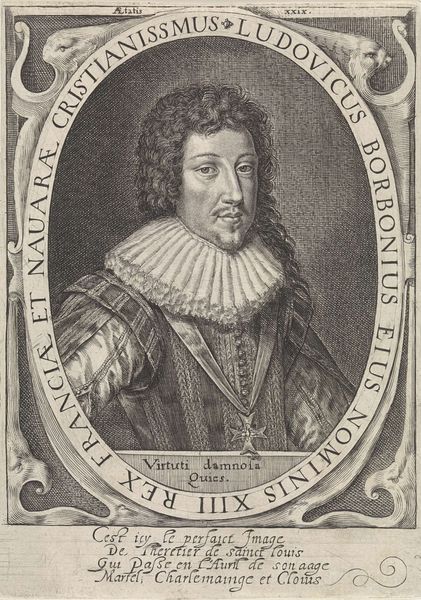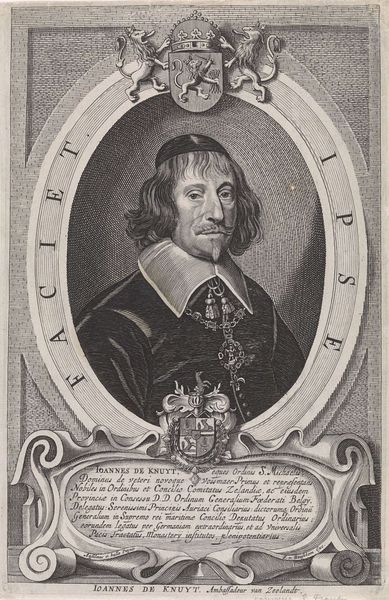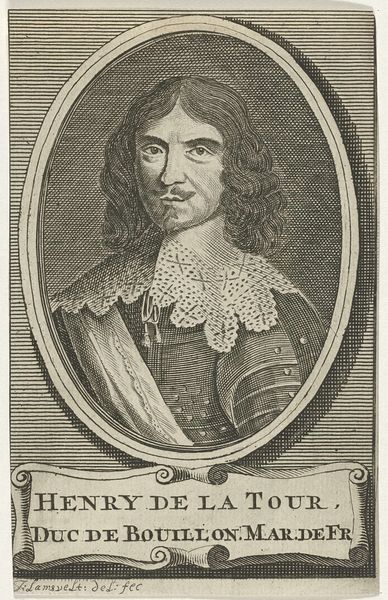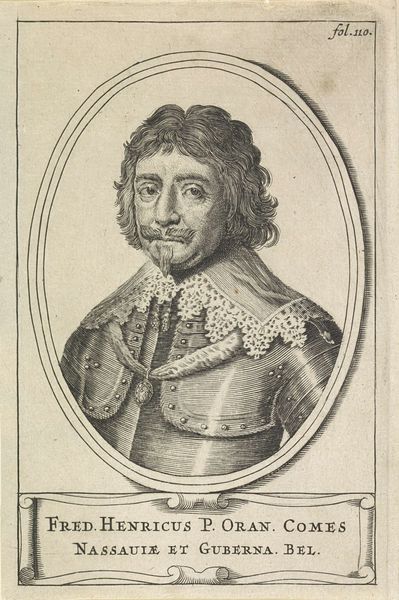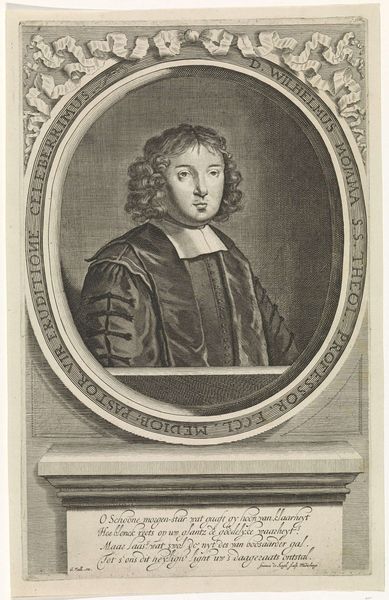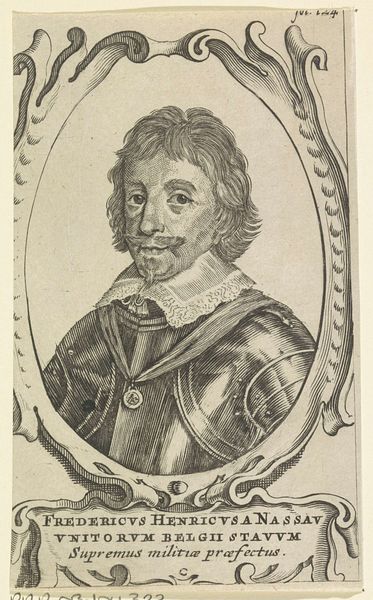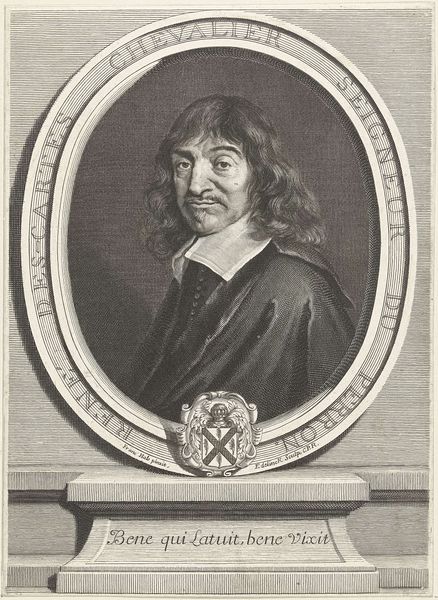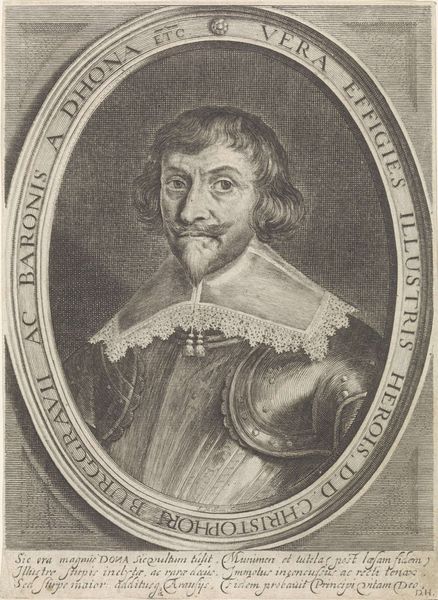
print, engraving
#
portrait
#
baroque
# print
#
old engraving style
#
personal sketchbook
#
19th century
#
history-painting
#
engraving
Dimensions: height 319 mm, width 207 mm
Copyright: Rijks Museum: Open Domain
Crispijn van de Passe the Younger created this portrait of Filips Karel, Prince of Arenberg, using engraving techniques. The image captures the prince within an ornate oval frame, a format that was popular for portraying nobility at the time. Van de Passe, working in the 17th century, navigated a society deeply structured by class. The print not only immortalizes the prince but also reinforces his status. Consider the prince’s gaze, and the deliberate display of his noble attire, including the meticulously detailed lace collar. All these elements are designed to project power and legitimacy. However, portraits also offer a glimpse into personal identity. Is this a true likeness, or an idealized representation intended to solidify his position? The emotional resonance here lies in the tension between public image and private self. How might the subjects themselves have felt about these portrayals, knowing they would circulate and shape perceptions of their identity and legacy?
Comments
No comments
Be the first to comment and join the conversation on the ultimate creative platform.
